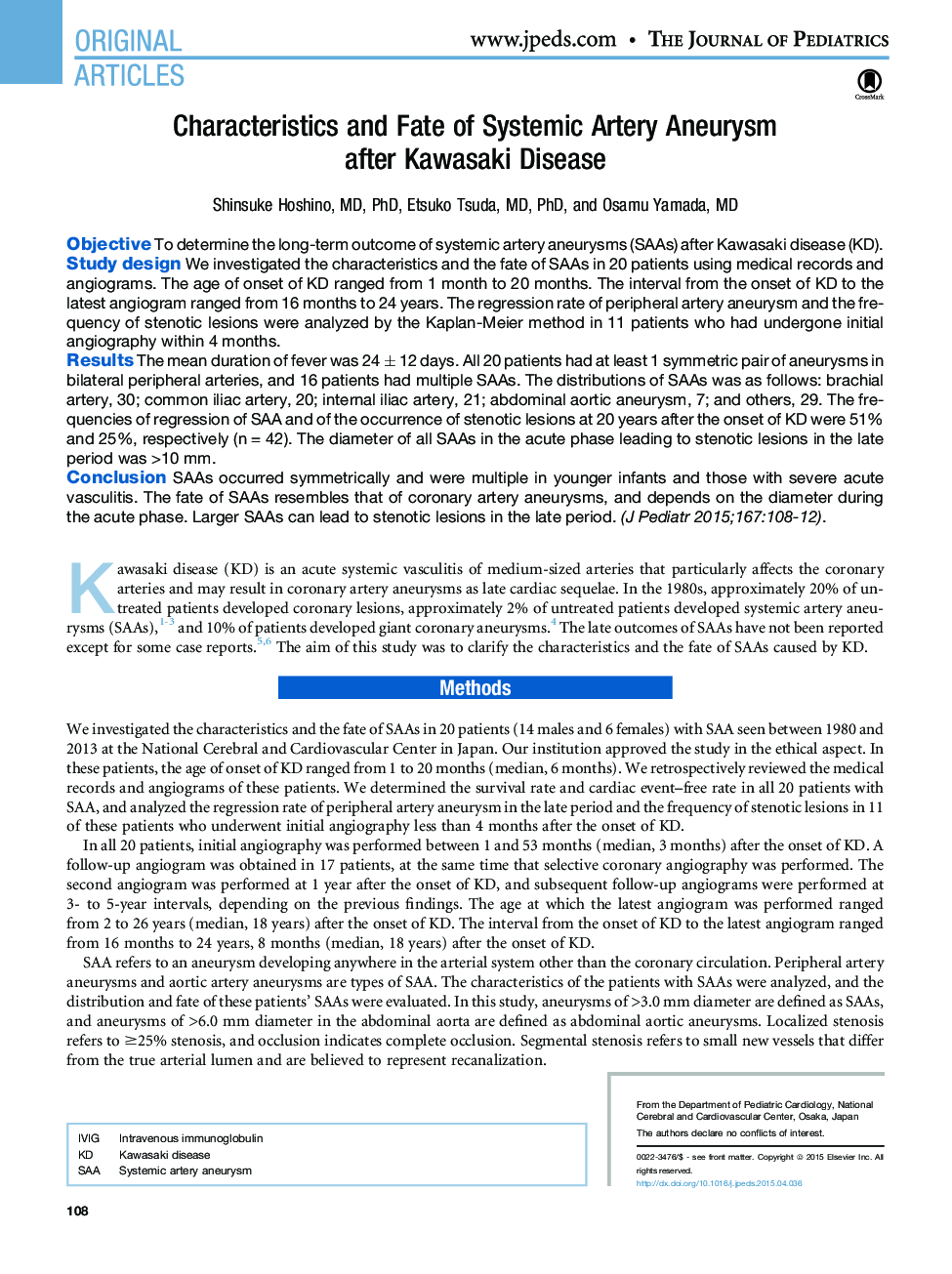| Article ID | Journal | Published Year | Pages | File Type |
|---|---|---|---|---|
| 6220303 | The Journal of Pediatrics | 2015 | 7 Pages |
ObjectiveTo determine the long-term outcome of systemic artery aneurysms (SAAs) after Kawasaki disease (KD).Study designWe investigated the characteristics and the fate of SAAs in 20 patients using medical records and angiograms. The age of onset of KD ranged from 1 month to 20 months. The interval from the onset of KD to the latest angiogram ranged from 16 months to 24 years. The regression rate of peripheral artery aneurysm and the frequency of stenotic lesions were analyzed by the Kaplan-Meier method in 11 patients who had undergone initial angiography within 4 months.ResultsThe mean duration of fever was 24 ± 12 days. All 20 patients had at least 1 symmetric pair of aneurysms in bilateral peripheral arteries, and 16 patients had multiple SAAs. The distributions of SAAs was as follows: brachial artery, 30; common iliac artery, 20; internal iliac artery, 21; abdominal aortic aneurysm, 7; and others, 29. The frequencies of regression of SAA and of the occurrence of stenotic lesions at 20 years after the onset of KD were 51% and 25%, respectively (n = 42). The diameter of all SAAs in the acute phase leading to stenotic lesions in the late period was >10 mm.ConclusionSAAs occurred symmetrically and were multiple in younger infants and those with severe acute vasculitis. The fate of SAAs resembles that of coronary artery aneurysms, and depends on the diameter during the acute phase. Larger SAAs can lead to stenotic lesions in the late period.
